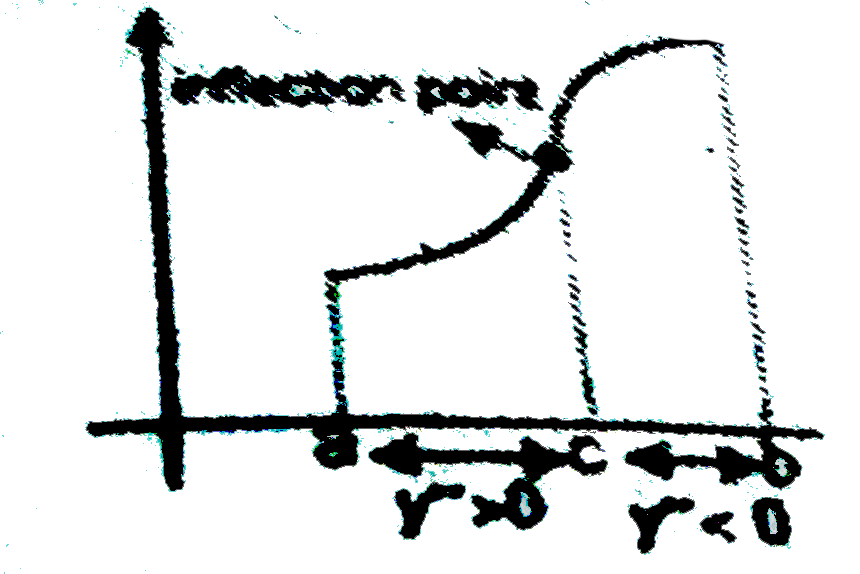Concavity and convexity :
if f''(x)>0∀x∈(a,b) then the curve y=f(x) is concave up ( or convex down) in (a,b) and iff''(x)<0∀x∈(a,b) then the curve y=f(x) is concave down (or convex up ) in (a,b)

Inflection point :
The point where concavity of the curve changes is known as point of inflection (at inflection point f''(x) is equal to 0 or undefined)

Number of point of inflection for f(x)=(x−1)3(x−2)2 is :
1
2
3
4
The correct Answer is:C
Step by step video, text & image solution for Concavity and convexity : if f''(x) gt 0 AA x in (a,b) then the curve y=f(x) is concave up ( or convex down) in (a,b) and if f''(x) lt 0 AA x in (a,b) then the curve y=f(x) is concave down (or convex up ) in (a,b) Inflection point : The point where concavity of the curve changes is known as point of inflection (at inflection point f''(x) is equal to 0 or undefined) Number of point of inflection for f(x) =(x-1)^(3) (x-2)^(2) is : by Maths experts to help you in doubts & scoring excellent marks in Class 12 exams.
Updated on:21/07/2023Topper's Solved these Questions
- APPLICATION OF DERIVATIVESBook:RESONANCEChapter:APPLICATION OF DERIVATIVESExercise:Exersise-3 Part I
Explore 27 Videos
- APPLICATION OF DERIVATIVESBook:RESONANCEChapter:APPLICATION OF DERIVATIVESExercise:Exersise-3 Part II
Explore 22 Videos
- APPLICATION OF DERIVATIVESBook:RESONANCEChapter:APPLICATION OF DERIVATIVESExercise:Exersise-2 Part III
Explore 23 Videos
- COMBINATORICSBook:RESONANCEChapter:COMBINATORICSExercise:Exercise-2 (Part-II: Previously Asked Question of RMO)
Explore 8 Videos
Similar Questions
Knowledge Check
Concavity and convexity :
if f''(x)>0∀x∈(a,b) then the curve y=f(x) is concave up ( or convex down) in (a,b) and iff''(x)<0∀x∈(a,b) then the curve y=f(x) is concave down (or convex up ) in (a,b)

Inflection point :
The point where concavity of the curve changes is known as point of inflection (at inflection point f''(x) is equal to 0 or undefined)

Exhaustive set of values of 'a' for which the function f(x)=x4+ax3+3x22+1 will be concave upward along the entire real line is :A[−1,1]B[−2,2]C[0,2]D[0,4]Let g'(x)>0andf'(x)<0∀x∈R, then
Ag(f(x+1))>g(f(x−1))Bf(g(x−1))<f(g(x+1))Cg(f(x+1))<g(f(x−1))Dg(g'(x+1))<g(g(x+1))If A and B are the points of intersection of y=f(x) and y=f−1(x), then
AA and B necessarity lie on the line y=xBA and B must be coincidentCslope of line AB may be -1DNone of these above
If f''(x)<0∀x∈(a,b) and (c,f(c)) is a point lying on the curve y=f(x), where a<c<b and for that value of c, f(c) has a maximum then f'(c) equals
View Solutionb.Concave lens and Convex Lens.
View SolutionConcavity Of Curve And Point Of Inflection
View SolutionThe length of curve: y=f(x) between x=a and x=b is given by
View SolutionIf f''(x)>0∀x∈R,f'(4)=0 and g(x)=f(cot2x−2cotx+5),0<x<π2 , then
View Solution

